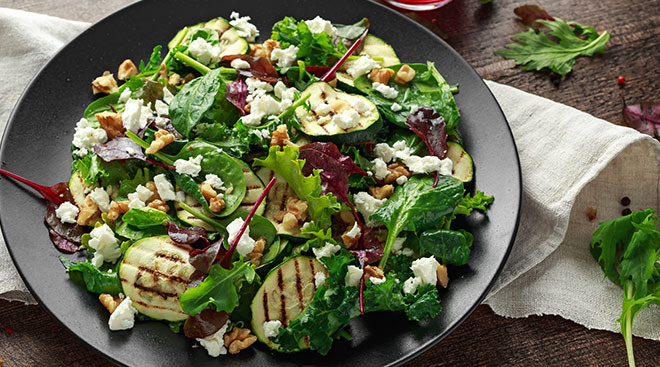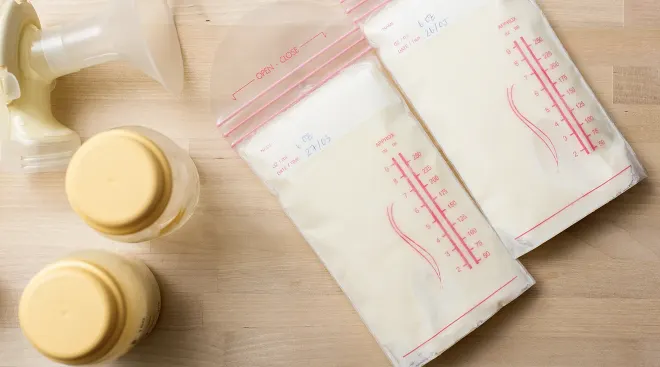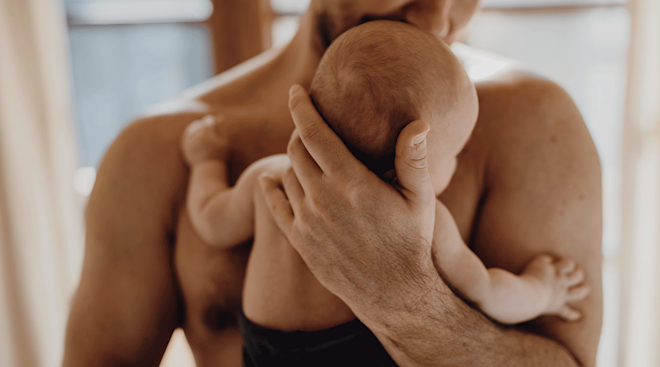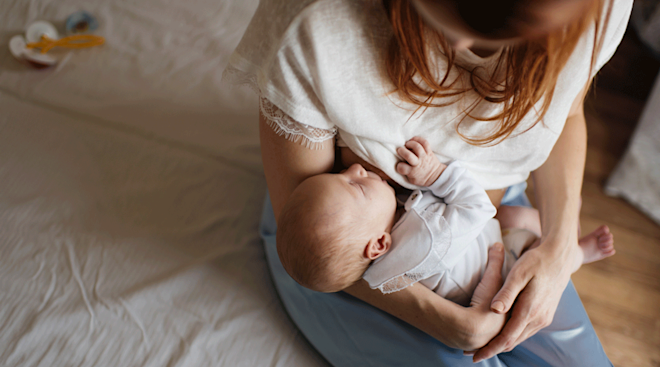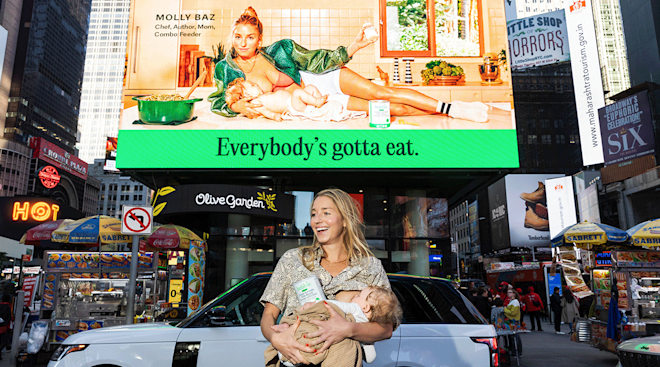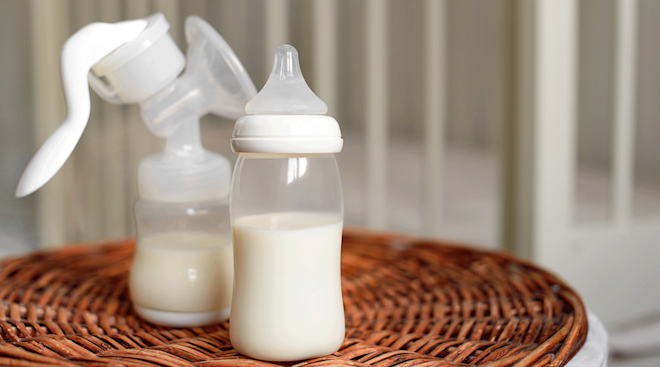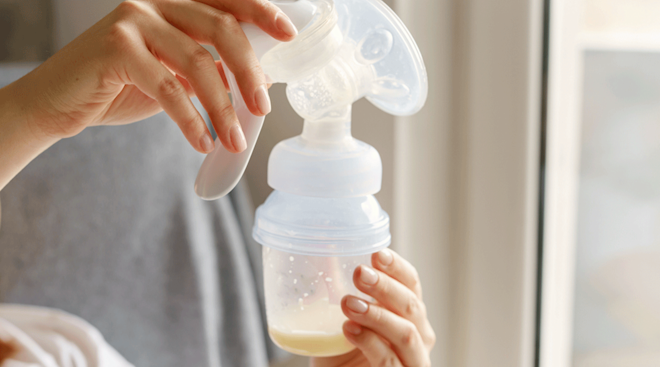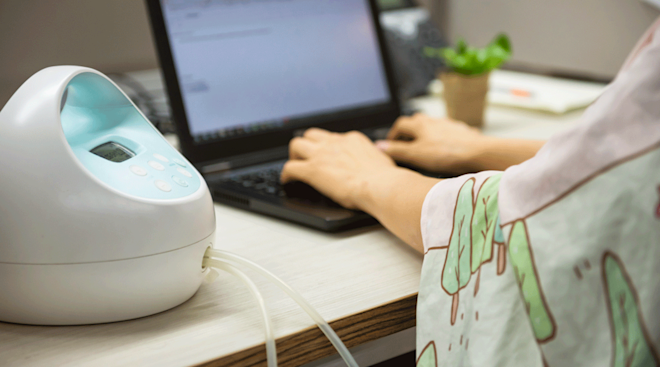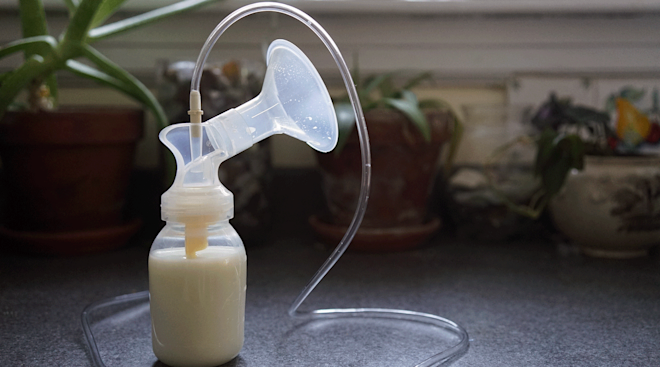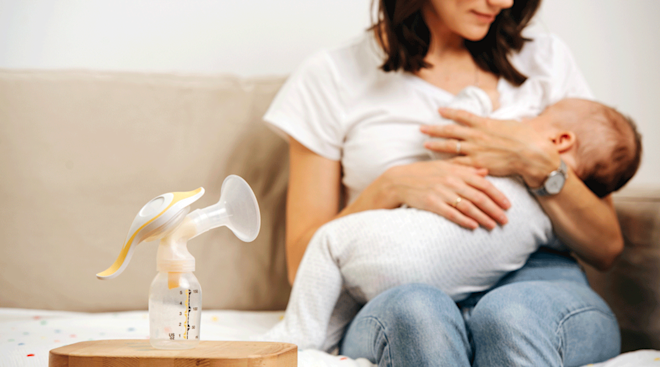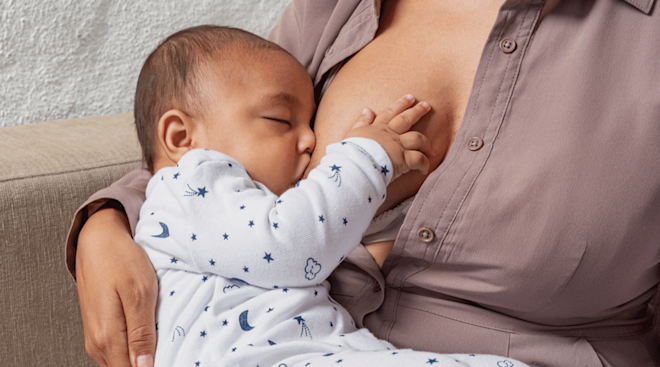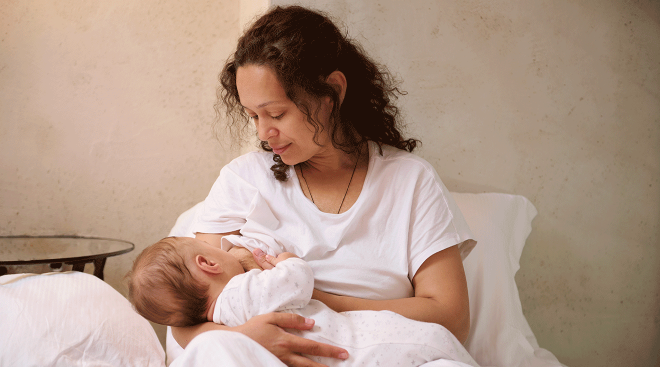How to Eat a Healthy Breastfeeding Diet
Sure, you’ve heard the benefits of breastfeeding. But have you ever thought about how what you eat while breastfeeding can affect baby? Certain nutrient-packed foods can help keep your body and your milk supply nice and healthy, while other foods can lower your milk production and impact baby’s digestive system. We’re here to help you get to the bottom of all your breastfeeding diet concerns, from the best foods to eat while breastfeeding to the best vitamins to supplement your meals, plus which foods to avoid or limit while breastfeeding and why.
To start, there’s good news for your evolving body: Making all that milk means you’re burning about 500 calories a day if you’re exclusively breastfeeding. That’s the equivalent of running about five miles at a good clip—except you can do it from the comfort of your chair while snuggling up with baby. Even better, it doesn’t have to be all or nothing. If you’re supplementing with formula, you’ll still burn through about 300 extra calories a day, says Jessica Cording, a registered dietitian who works with new moms in her New York City practice.
And though it may not feel like it right now, thanks to breastfeeding, you can (and likely will) lose any weight gained during pregnancy. “You do naturally when you’re breastfeeding,” Cording says. “It’s helping the uterus shrink down, your metabolism is firing, and it happens without even having to obsess over calories.”
Losing the pregnancy weight is likely not at the top of mind for many tired new mamas! But, if you’re anxious to slip back into those pre-pregnancy jeans, it’s fine to start keeping careful track of your breastfeeding diet. Just beware that overly restrictive dieting while breastfeeding can sap your energy and might even mess with your ability to produce the milk baby needs. In one study, women were able to eat as few as 1,500 calories a day without impacting their milk output, but once they dipped below that number their production shrank by 15 percent. “I generally encourage moms to take it slow and steady,” Cording says. “Sometimes if we’re being overly restrictive with our calorie intake, you’re missing out on important nutrients that mom and baby really need.” Remember, your body just went through a major change! When it comes to losing any pregnancy weight, give yourself time. The focus of eating a healthy breastfeeding diet should be on the health benefits it can bring to both your recovery and baby.
Generally you’ll need to eat about 500 calories more per day to make up for what you burn while nursing, but the best diet for breastfeeding mothers doesn’t just require more calories. Since you now have to share all the vitamins and minerals you eat with baby, maximizing nutrition is the name of the game. (Thinking about dieting while breastfeeding? Load up on foods that are low in calories but high in nutrients to help you hit your recommended daily values.) Read on to learn about the key nutrients you’ll want to incorporate into your daily breastfeeding diet.
Nutritional suggestions
• Protein. How much protein you’ll need to include in your breastfeeding diet depends on your weight, but generally you need about 15 more grams of protein than you did before you were pregnant, Cording says. Try this tip so you know you’re getting enough: Take your weight, cut it in half and add 15. That’s about how many grams of protein you should aim for each day. Or a simpler strategy is just to include some protein in every meal or snack. Aside from poultry and fish—which have 26 g and 17 g of protein per 3 oz, respectively—some good sources of protein include lentils (9 g per half cup), milk (8 g per cup), peanut butter (7 g per 2 tablespoons) and eggs (6 g per hardboiled egg).
• Carbohydrates. Now’s not the time to go low-carb, Cording says, especially if you’re short on sleep. Your energy levels and hormones are in a state of flux, and making sure you have some carbohydrates for your body to work with will help you stay more energized. You’ll need about 210 grams a day, or about 60 percent more than before you were pregnant. So make sure your breastfeeding diet includes some type of healthy carb—it could be a fruit (a banana has 31 g), whole grain (brown rice has 45 g per half cup, cooked), veggies (a cooked sweet potato has 27 g), pasta (14g per serving of pasta) or dairy product (8 oz of plain, nonfat Greek yogurt has 11 g)—at each meal or snack. And as you probably already know, skip the white carbs and do your best to reach for healthy, higher-fiber carbs that’ll keep you full longer and pack an extra-nutritious punch.
• Folic acid. You already know how important folic acid is during pregnancy, but it’s just as important for your breastfeeding diet too. “Baby is still developing, so those same things are still very important,” Cording says. Breastfeeding moms should aim for 500 micrograms (μg) per day. A great source: greens like spinach (100 μg per half cup, cooked) and kale (about 19 μg per half cup, raw). “It’s kind of a cliché, but these leafy greens are good for just about everything,” Cording says. You’ll also find it in fortified breads and pastas as well as oranges and sesame seeds.
• Omega-3 fatty acids. We often immediately think of fish for omega-3s, which are important for baby’s brain development—but they’re hardly your only source. You can also find these healthy fats in grass-fed beef (80 mg per 3.5 oz) and omega-3 enriched eggs (225 mg each), as well as walnuts and chia seeds. For a healthy breastfeeding diet, shoot for 200 to 300 mg of omega-3s per day, or the amount in one to two servings of fish a week. (Just steer clear of high-mercury seafood.)
• Calcium. While you don’t actually need more calcium while you’re breastfeeding, it’s important that you fill your quota of about 1,000 mg daily. It’s normal to lose about 3 to 5 percent of your bone mass during breastfeeding (don’t worry, it comes back after you wean), but you want to make sure your bones don’t take a bigger hit than they need to. Luckily, unlike baby, you’ve got plenty more options to pick from than milk. Add tofu (434 mg per half cup), canned salmon (212 mg per serving), broccoli (70 mg per serving) and bok choy (74 mg per cup) to your breastfeeding diet plan.
• Iron. Most women don’t need extra iron while breastfeeding, but if you lost blood during your delivery or after, you might. Check with your doctor to see how much daily iron he or she recommends. Red meat is the easiest way to get your fill, but vegans and vegetarians have options too. Fortified cereal (20 mg per half cup), beans (2 mg per half cup) and dark leafy greens (3 mg per half cup of spinach) will all help you get the iron you need with or without meat in your breastfeeding diet.
So now you have a sense for which nutrients should be worked into your breastfeeding diet—but if you don’t have the time to peruse the nutritional facts for every food, here’s a rundown of some of the overall best foods to eat while breastfeeding.
• Oatmeal. A known galactagogue, oats can actually help boost your milk supply. Plus, they’re high in fiber and iron and help ward off anemia (which can mess with your milk supply). If you’re dieting while breastfeeding, oatmeal is an extra-smart choice, since it’ll keep you full long after breakfast. Tip: Quick oats are fine, but steer clear of the pre-packaged kind, since they tend to have tons of salt and sugar.
• Almonds. Assuming you aren’t allergic to almonds, these nuts are a fantastic addition to any breastfeeding diet, since they’re packed with both protein and calcium. Another food that’s high in both? Yogurt. Go for gold and top off a bowl of yogurt with some sliced almonds!
• Salmon. As far as fish goes, salmon is one of the best foods to eat while breastfeeding. Whether wild-caught or farm-raised, it is a great source of protein and DHA, a type of omega-3 fatty acid that helps support baby’s nervous system.
• Beans. Fiber-rich kidney, black, pinto and other beans can be good for your digestive system, and they’re fantastic sources of iron and protein. It’s true you might get a little gassy after eating beans, but when passed through breast milk, they won’t give your baby gas.
• Spinach. And broccoli. And Swiss chard. And pretty much any dark green, leafy veggie. They’re all-around nutrient-dense and even high in calcium—great for vegan moms and those who are dieting while breastfeeding, since they’re low in calories to boot.
Vitamins and breastfeeding
A healthy, well-balanced breastfeeding diet is all you really need to cover your nutritional bases, especially if you include meat and fish. Still, many experts recommend sticking with your prenatal vitamins while breastfeeding. These are some of the reasons why you might want or even need to supplement your breastfeeding diet:
• For your bones. Calcium—as well as the vitamin D that helps you absorb it—is a breastfeeding diet must-have, since both pregnancy and breastfeeding temporarily decrease your bone mass. Extra calcium isn’t going to prevent the bone loss, but it’ll help make up for it.
• For your blood. The whole no-periods perk of pregnancy and (early) breastfeeding means you’re probably at less risk of anemia now. But if you lost a lot of blood during or after your delivery, your doctor or midwife might recommend an iron supplement to your breastfeeding diet to help replenish that loss.
• For baby’s brain. The American Academy of Pediatrics recommends getting 200 to 300 mg a day of omega-3 fatty acids. If you don’t serve up seafood at least once a week, a supplement can help your daily numbers stay on track. Allergic to fish? You can opt for a plant-derived vegetarian supplement.
• For vegans and vegetarians. If meat, chicken, fish and/or dairy products aren’t part of your daily breastfeeding diet, you’ll need a supplement with vitamin B12 in it. Moms who are vegan may be short on this vitamin, which can lead to low milk supply. Luckily, most over-the-counter multivitamins have it, and it’s also in fortified foods like breakfast cereal, some nutritional yeasts, meat substitutes and milk substitutes.
Now that you’ve safely ushered baby into the world, there are fewer no-nos when it comes foods to eat while breastfeeding. So, can you eat sushi while you’re nursing? Yep! If you’ve been craving your weekly fix these past nine months, go ahead and put it back on your breastfeeding diet plan. But don’t forget that what you eat and drink still gets filtered through to baby, so when it comes to certain foods, moderation is key. Here, some foods to limit while breastfeeding:
• Alcohol. The AAP says it’s generally safe to breastfeed after having one drink. But keep in mind that alcohol does get into your breast milk, so to play it safe, have a drink after you’ve nursed baby, then wait two to three hours for your body to metabolize the alcohol. And while many have heard that “pumping and dumping” helps remove alcohol from breast milk after having a drink, it’s a myth. Only time gets rid of the tainted milk.
• Caffeine. Keep your coffee (or tea) habit to no more than three cups a day, and consider having your beverage after you nurse baby, to limit the amount of caffeine that makes its way into baby’s system.
• High-mercury fish. Steer clear of shark, swordfish, king mackerel and tilefish, which are high in mercury (and can affect baby’s brain). Instead, stick to 12 ounces a week of low-mercury fish like shrimp, salmon, pollock and catfish.
• Peppermint, parsley and sage. All three are considered antigalactagogues, meaning they can decrease your milk supply if eaten in large quantities. Cooking with these herbs isn’t likely to harm your supply, but if your production drops after eating a lot of them, it’s best to cut them from your breastfeeding diet.
Do certain foods make baby gassy or colicky?
When baby’s fussy or has colic, it’s natural to (desperately!) look for a fix. But the truth is, foods will make baby gassy or colicky only if she has a sensitivity or allergy to them.
If you’re worried baby has an allergy, odds are he probably doesn’t. Cow’s milk protein is the most common culprit, and only 2 to 3 percent of exclusively breastfed babies have an allergic reaction, according to the AAP. Other common offenders are soy, wheat, egg, peanuts, tree nuts, fish and citrus. If you (and baby) happen to be allergic, you’re most likely going to see that allergy manifest in the form of a skin rash like eczema or a gastrointestinal symptom like blood in her stool, vomiting, colic or difficulty breathing.
One of the simplest ways to figure out if one (or more) of the foods on your breastfeeding diet is bothering baby is to systematically eliminate suspected offenders from your plate. Experts recommend cutting one food at a time, starting with the most likely: cow’s milk. Then wait at least two weeks (though often you’ll see a change in as little as a few days) before moving on to another food. Don’t see a difference? You can add that food back and try cutting out the next one on your list until you’ve found the offender. While you may be tempted to try and ward off allergies by avoiding common culprit foods, there’s little to no evidence that restricting your breastfeeding diet will have any effect on baby’s chances of avoiding a food allergy.
Feeling overwhelmed? Don’t. Breastfeeding nutrition is important, but try not to drive yourself crazy. As Cording says, “as long as you’re breastfeeding, you feel good, baby is growing well and everybody is getting along, that’s the important thing.”
Please note: The Bump and the materials and information it contains are not intended to, and do not constitute, medical or other health advice or diagnosis and should not be used as such. You should always consult with a qualified physician or health professional about your specific circumstances.
Navigate forward to interact with the calendar and select a date. Press the question mark key to get the keyboard shortcuts for changing dates.
































